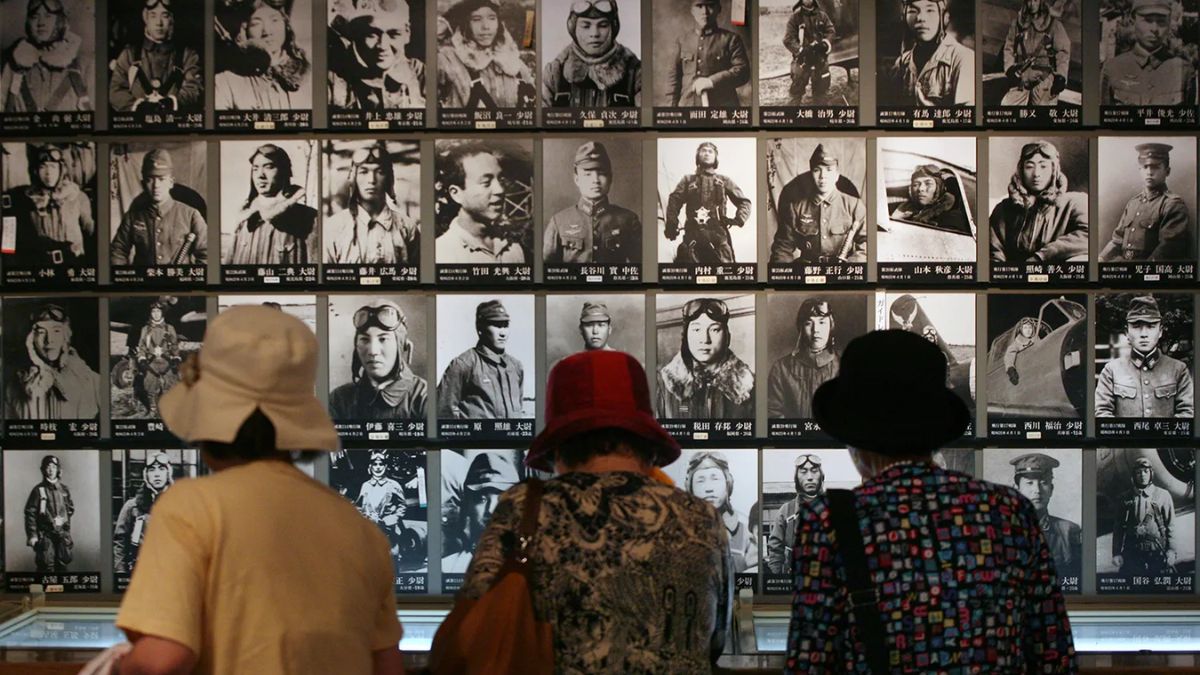While tourists across the world throng to scenic hills, breezy beaches, national monuments, or historic sites, Japanese have a unique interest in places associated with suicides.
Yes, people in Japan throng to sites associated with suicides — way back in World War II.
Japan has a fascination with ‘kamikaze’ pilots, who mounted suicide attacks against Allied nations during World War II. There are museums dedicated to such pilots where their photos and documents are exhibited.
The fascination is not a result of simple commemorative spirit for the nation’s history but has been systematically cultivated with a constant dose of popular culture and political environment that has glorified kamikaze pilots.
Who were ‘kamikaze’ pilots?
‘Kamikaze’ pilots were Japanese pilots who flew suicide missions during World War II.
The word ‘kamikaze’ means ‘divine wind’ and is rooted in two legendary typhoons of the same name in 13th century that sunk Mongol ships invading Japan at the time, according to Britannica Encyclopaedia.
In World War II, kamikaze pilots flew suicide missions in which they would ram their planes in Allied ships of onshore facilities. Planes of kamikaze pilots would often be loaded with more fuel or bombs so as to maximise the damage — not unlike present-day suicide bombings by vehicles or humans.
As many as 4,000 kamikaze pilots undertook suicide missions during World War II. The youngest of such pilots was just 16-year-old.
There emerged a unique culture around these suicide pilots. The Imperial War Museum notes that there used to be a ceremony before such pilots went on their suicide missions in which they drank sake and ate rice. It adds that they used to get a medal and a ‘katana’ sword during these ceremonies. It further says that these pilots used to carry their beloved possessions on the missions with them.
Impact Shorts
More ShortsHow ‘kamikaze’ suicide tourism developed in Japan?
In recent years, a number of films featuring kamikaze pilots have glorified them.
Last year, the film ‘Till We Meet Again on the Lily Hill’ featured a troubled teenager who travels back in time to World War II to fall in love with a kamikaze pilot.
Similarly, ‘Godzilla Minus One’, which attracted international attention, featured a failed kamikaze pilot seeking redemption.
The film Godzilla Minus One, written and directed by Takashi Yamazaki, was an international hit in 2023 and picked up an Oscar earlier this year. It’s about a failed kamikaze pilot seeking redemption.
In 2013, the film ‘Eternal Zero’, based on the novel of the same name, was centered around kamikaze pilots and became one of the biggest hits in Japan of all time. The novel is also said to have sold millions of copies. Other films involving aerial and maritime suicidal missions have also been made, such as ‘For Those We Love’ (2007) and ‘The Firefly’ (2001).
Such a fascination has led to municipalities in Japan opening museums commemorating kamikaze pilots, such as Chiran Peace Museum in southwest Japan.
Journalist and former British Navy officer Alexander Wooley noted in an article for Foreign Policy that walls at the museum feature photographs of young kamikaze pilots. He describes a teen girl and her parents as being “clearly so absorbed by the museum’s walls of young male faces”.
Wooley noted that the museum holds original last wills and letters of these pilots, which were often beautifully written in calligraphy.
During April 2023-March 2024, around 338,000 people visited the museum, which was an increase from around 290,000 the previous year, noted Wooley, who further observed that the figures from 2024 would be even higher. This suggests the rising popularity of kamikamze pilots in Japan.
Ironically, such ‘suicide tourism’ is driven primarily by municipal governments who have made memorials and museums related to the World War II and kamikaze pilots with little focus from the federal Japanese government, according to Wooley.
Museums like the one at Chiran secured letters, wills, and mementoes directly from the families of kamikaze pilots with no role from the Japanese government, noted Wooley.
Kamikaze pilots are shown in artworks as “souls ascending to heaven, or their bodies turned into cherry blossoms or fireflies”, as per Wooley.


)

)
)
)
)
)
)
)
)



